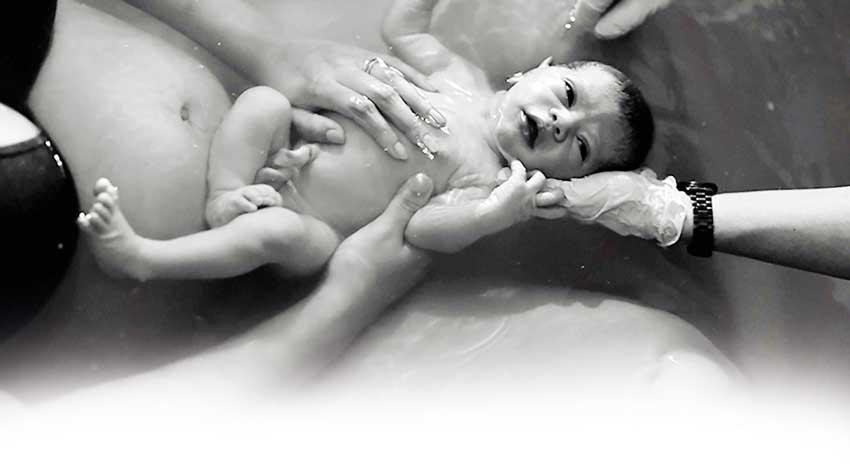Reply To:
Name - Reply Comment

 Although water births became a topic that caused ripples on social media, legend has it that it had been practised since the times of the Egyptian pharaohs. However, it was in 1805 that the first water birth took place in Europe. Recently, a Sri Lankan couple too opted for a water birth, but many obstetricians are of the view that water births are not for everybody. With that in mind the Daily Mirror spoke to Consultant Obstetrician and Gynaecologist Dr. Vijith Vidyabhushana who explained its benefits and complexities in detail.
Although water births became a topic that caused ripples on social media, legend has it that it had been practised since the times of the Egyptian pharaohs. However, it was in 1805 that the first water birth took place in Europe. Recently, a Sri Lankan couple too opted for a water birth, but many obstetricians are of the view that water births are not for everybody. With that in mind the Daily Mirror spoke to Consultant Obstetrician and Gynaecologist Dr. Vijith Vidyabhushana who explained its benefits and complexities in detail.
Water births explained
According to Dr. Vidyabhushana, a water birth is a childbirth that happens in water. “It is said to be more relaxed and the mother experiences less pain. This has been practiced in England and other European countries for the past 30 years, especially in midwife led hospitals. However, the mother stays away from taking narcotic painkillers and other pain reducing techniques. This is because most mothers-to-be like to have natural births,” said Dr. Vidyabhushana.
Water births happen in two ways. One is water immersion during the first stage of labour and the mother comes out of the water tub during the second stage where the cervix gets dilated until the time of delivery. The other method is where birth itself happens in water including the pushing phase. In UK the midwife is present throughout the delivery. In our setup the doctor will be present.
Benefits and risks to the mother
Speaking on benefits to the mother he said that it is said to promote efficient womb contractions because the mother is immersed in warm water. “It improves blood and oxygen supply to uterine muscles and gives oxygen to the baby as well. The mother experiences less pain. The warm water also lowers blood pressure experienced by the mother due to anxiety. Warm water relaxes the birth canal where it becomes more elastic and relaxed thereby reducing the need for an episiotomy – a surgical cut made at the opening of the vagina during childbirth. Scientifically, water reduces the release of stress-related hormones allowing mothers to produce pain inhibitors such as endorphins,” the doctor explained.
In terms of risks, there’s a remote risk of infections to the baby especially during the pushing phase where the mother might sometimes pass stools and the water could get contaminated. “Normally we insert Enema to the backside to ensure that the bowel is empty. When the mother is in the pool, the baby has to come to the surface. But if the umbilical cord is short it will be difficult for the baby to come out. If the baby is under stress there’s a theoretical risk that the baby could get aspirated. Since the baby is in the amniotic sac, giving birth in a similar environment will help reduce stress that would otherwise be experienced by the baby,” explained Dr. Vidyabhushana.
Not recommended for all mothers-to-be
However there are mothers who have diabetes, high blood pressure or even late pregnancies. “Of course there are contraindications,” said Dr. Vidyabhushana when asked if every mother could opt for water births. “If mothers have other medical complications such as high blood pressure, diabetes, sexually transmitted diseases such as herpes, water births are not recommended. If it is a twin or multiple pregnancy then again a doctor’s recommendation is required. If it’s a second pregnancy where both babies are in head-down position or if it’s a pre-term birth you shouldn’t go for a water birth. It is not recommended if baby is in the breach position as well. Sometimes the baby might pass stool while inside the womb and if that gets dissolved with amniotic fluid it will act as an irritant and the baby will get pneumonia,” he said.
Precautions to be taken
When asked about precautions, he further said that the doctor’s recommendation is required and she shouldn’t have any contraindications. “The process will take longer than a normal planned birth. The pain threshold of the mother should be high. The midwife and doctor should educate her on every aspect of the process. She needs to be admitted to a hospital that has all facilities because all hospitals may not have them. If they have had a first pregnancy with no complications, then depending on the history they can opt for a water birth during their second pregnancy. In this process everything happens naturally. Normally we need active medication to contract the womb but here we sometimes don’t even insert a cannula. On the other hand if the mother experience postpartum haemorrhage, that too would be a problem,” said Dr. Vidyabhushana.
A piece of advice
In conclusion he said that it has to be the correct person. “It’s quite costly here in Sri Lanka and given the health conditions required, not everybody can do a water birth. Besides, the doctor should be happy to go ahead with it,” he advised.